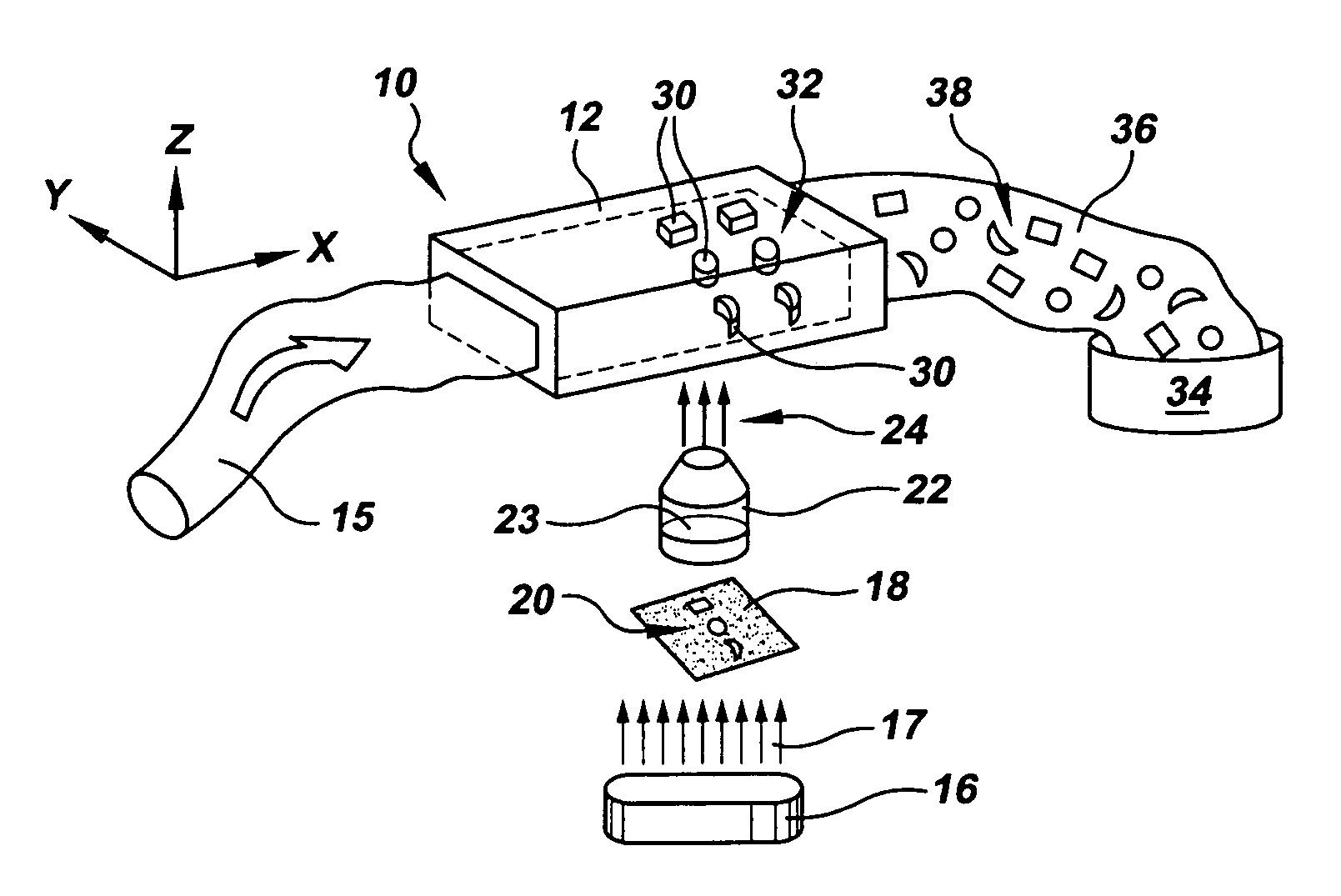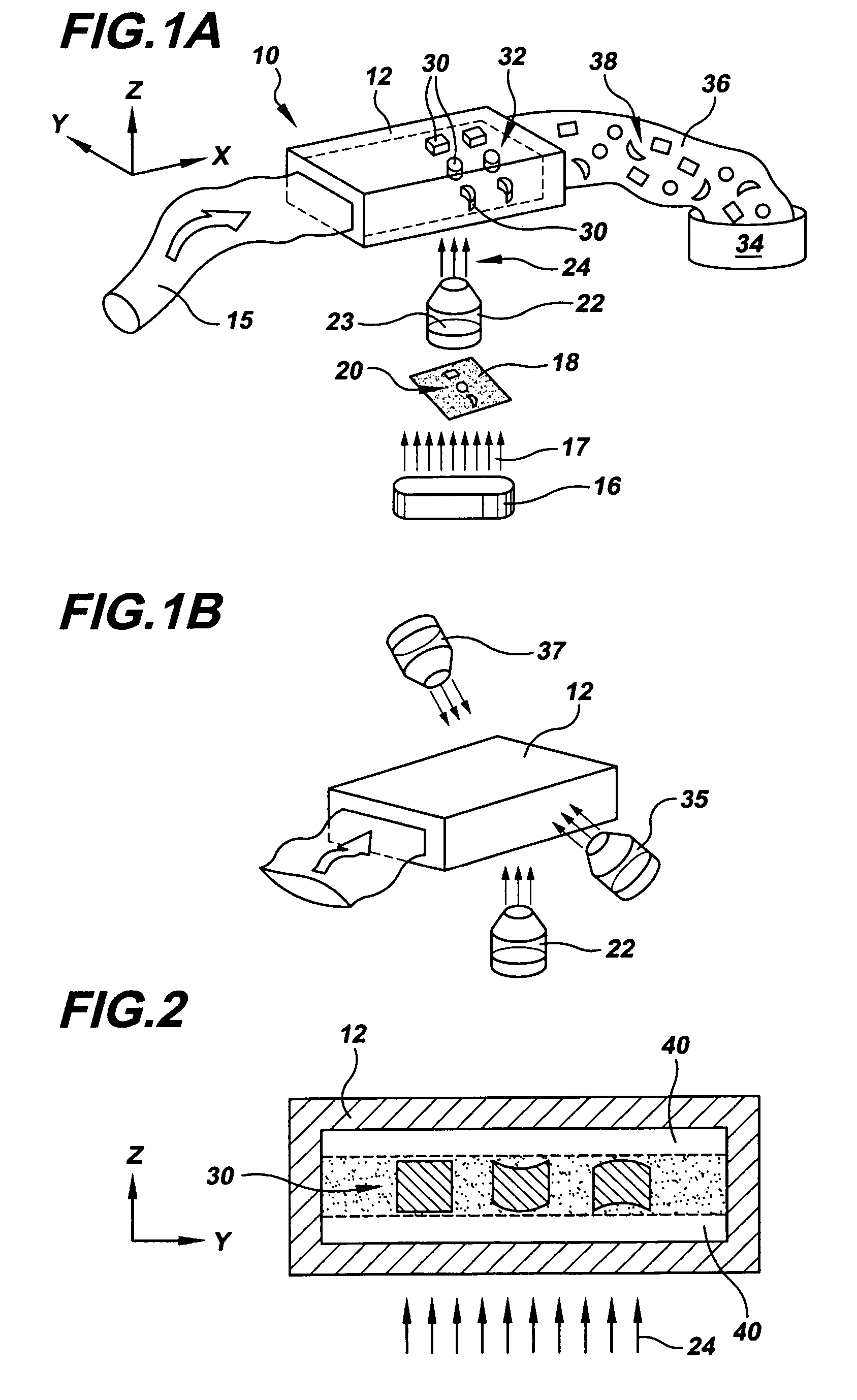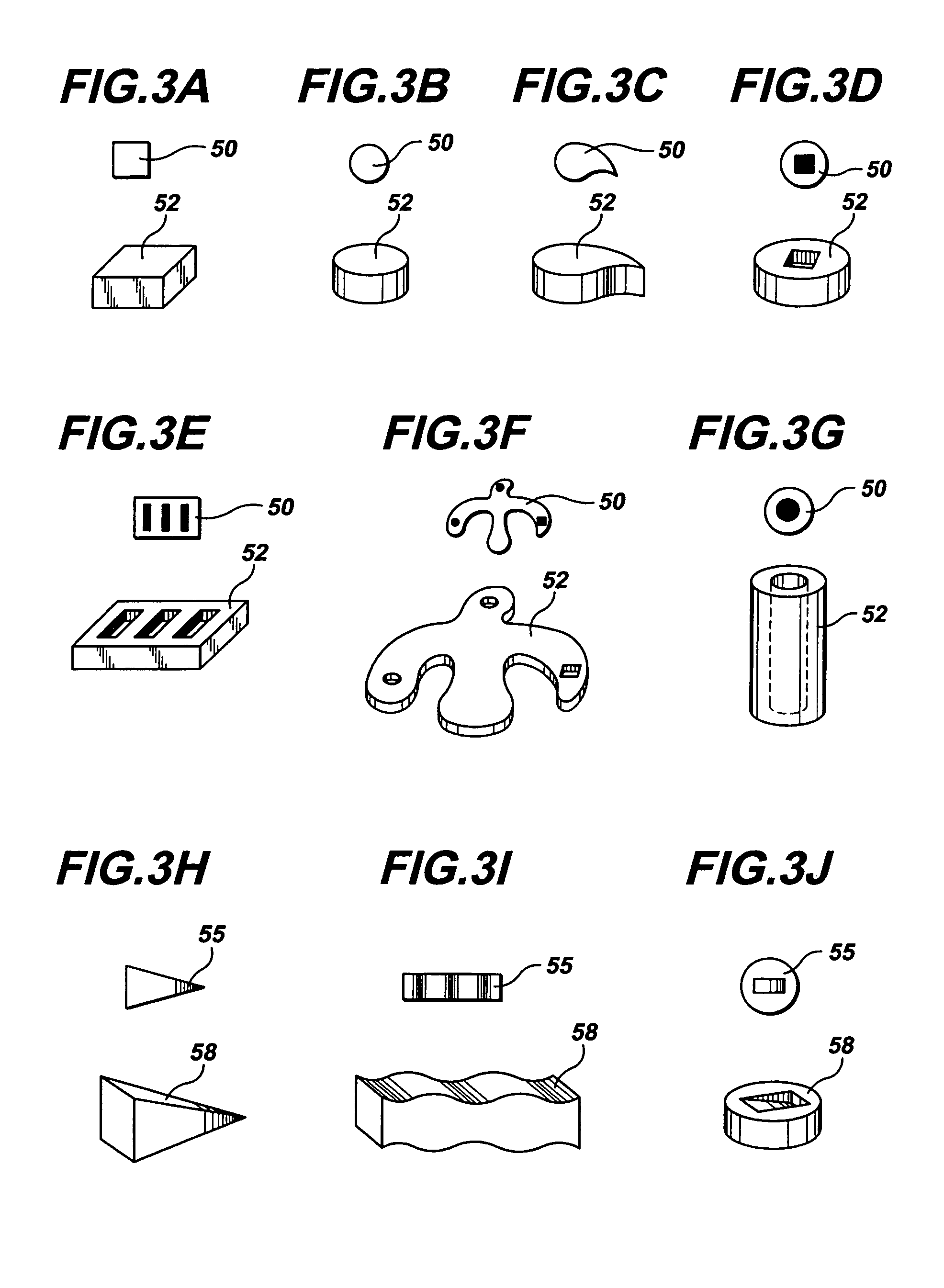Microstructure synthesis by flow lithography and polymerization
a microstructure and lithography technology, applied in the field of polymer materials, can solve the problems of limiting the composition and/or the through-put of such processes is typically limited, and the photolithography techniques generally limit the compatibility of the microstructure material, etc., to achieve the effect of superior control of the geometry of the microstructure, shape, composition and anisotropy
- Summary
- Abstract
- Description
- Claims
- Application Information
AI Technical Summary
Benefits of technology
Problems solved by technology
Method used
Image
Examples
example i
[0104]A number of microfluidic devices were fabricated by first patterning a silicon substrate with photoresist, SU-8, from Microchem, Newton, Mass., to define a mold structure corresponding to a rectangular microfluidic device cross section as in FIG. 6A. PDMS provided as Sylgard®184 silicon elastomer, from Dow Corning, Midland, Mich., was poured into the resulting positive-relief channels of the silicon substrate to mold an upper PDMS device structure 100 as in FIG. 6A. Rectangular microfluidic devices of 1 cm in length and three different channel widths were defined by the patterning, namely, 20 μm-wide, 600 μm-wide, and 1000 μm-wide, and three different rectangular microfluidic channel heights were defined by the patterning, namely, 10 μm in height, 20 μm in height, and 40 μm in height A layer of PDMS was spin-coated on glass slides to form bottom surfaces for the microfluidic devices as in FIG. 6A. The molded upper PDMS device structures were mated with PDMS-coated glass slides...
example ii
[0115]Square polymeric microstructures were synthesized in the manner of Example I with square mask features ranging in edge length from 10 μm to 500 μm. The microstructure synthesis was duplicated for a 20× objective and a 40× objective. The three microfluidic devices described in Example I were employed, having channel heights of 10 μm, 20 μm, and 40 μm. The PEG-DA and DAROCUR® 1173 photoinitiator monomer stream of Example I was employed in the microfluidic devices, with the steam flow stopped during the lithography-polymerization step, in the stop flow process described above. The resulting microstructures were collected and analyzed as in Example I.
[0116]The microstructure analysis was conducted to determine the smallest mask feature that could be polymerized at a given exposure time in the channels of varying height. FIG. 11A is a plot of the smallest mask feature that could be polymerized, as a function of exposure time, for the 20× objective; FIG. 11B is a plot of the smalles...
example iii
[0117]One of the microfluidic devices of Example I having a cross section channel height of 38 μm (intended as 40 μm) was adapted by replacing the PDMS-coated glass slide with an uncoated glass slide, and polymeric microstructure synthesis was carried out with the monomer as in Example I. It was found that the synthesized microstructures stuck to the glass plate. This result is recognized to be due to the absence of the oxygen inhibition effect enabled by the PDMS coating in Example I, thereby allowing the synthesized microstructures to polymerize all the way to the glass surface.
[0118]Polymeric microstructures were synthesized in the manner of Example I with a PDMS-coated glass slide device and with an uncoated glass slide device, both having a cross-sectional channel height of 38 μm. An exposure time, texp, of 0.1 s, a 360 μm square mask shape, and a 20× objective were employed with each of the two devices.
[0119]Microstructures synthesized with the two microfluidic devices were co...
PUM
| Property | Measurement | Unit |
|---|---|---|
| size | aaaaa | aaaaa |
| thickness | aaaaa | aaaaa |
| thickness | aaaaa | aaaaa |
Abstract
Description
Claims
Application Information
 Login to View More
Login to View More - R&D
- Intellectual Property
- Life Sciences
- Materials
- Tech Scout
- Unparalleled Data Quality
- Higher Quality Content
- 60% Fewer Hallucinations
Browse by: Latest US Patents, China's latest patents, Technical Efficacy Thesaurus, Application Domain, Technology Topic, Popular Technical Reports.
© 2025 PatSnap. All rights reserved.Legal|Privacy policy|Modern Slavery Act Transparency Statement|Sitemap|About US| Contact US: help@patsnap.com



